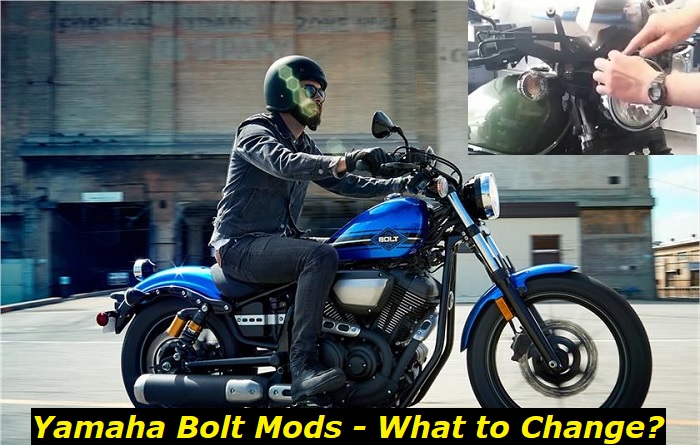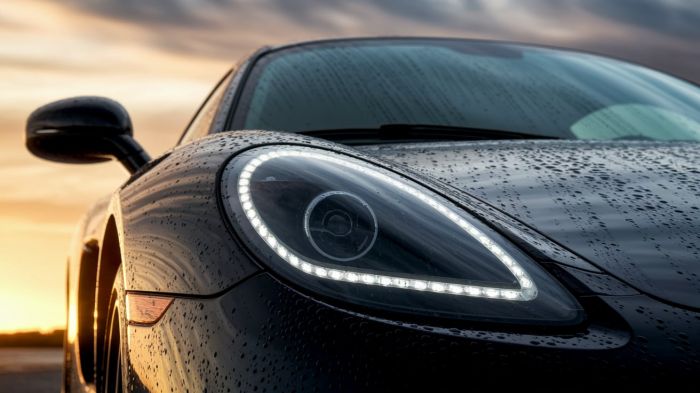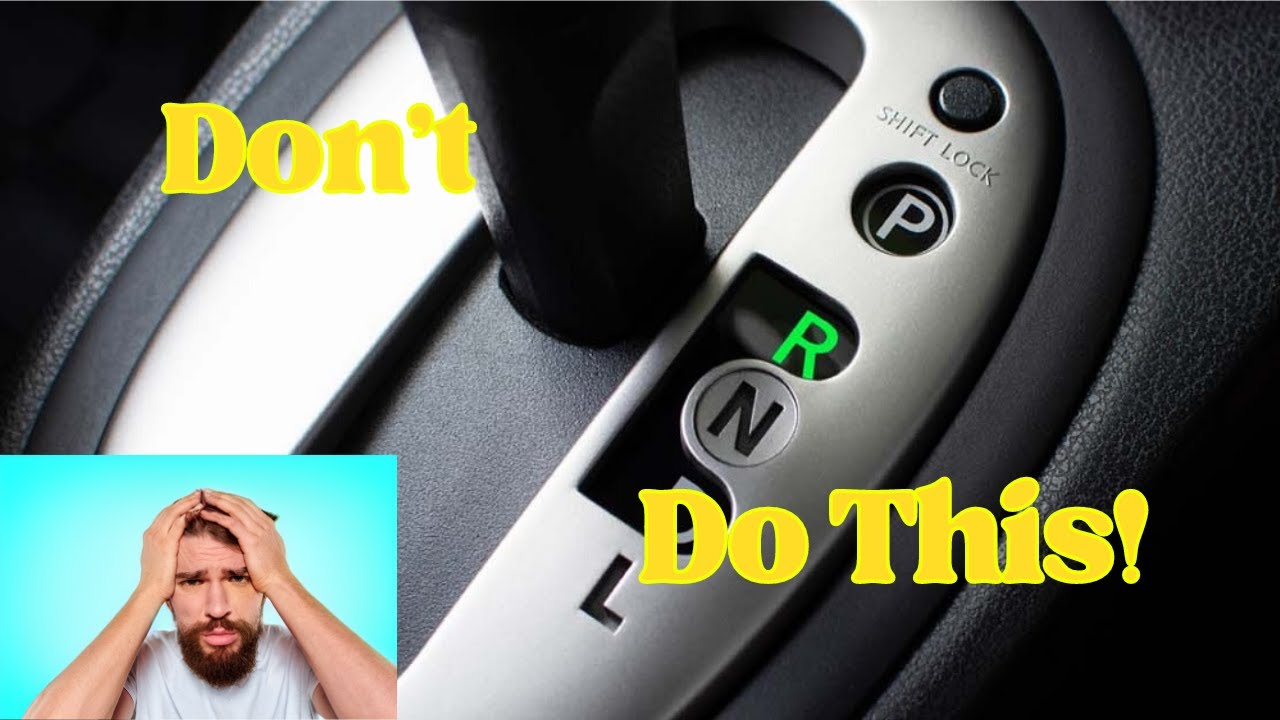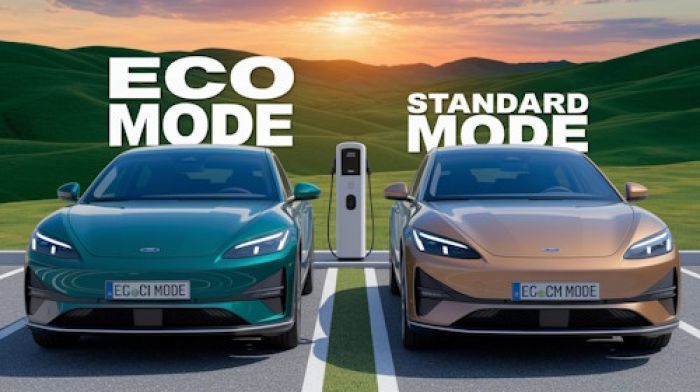Yamaha Motor Company designed the bike to pique riders who love customizing their bikes. It stylishly showcases power. But, it's far from perfect. Yamaha primarily paid more attention to the fun factor. In the process, they produced a low-tech bike. Despite its low-tech nature, many riders love Yamaha Bolt because of its customizability, price, comfort, and torque.
A new or veteran rider can comfortably ride and unleash the power hidden under its simple frame. If you own a Yamaha Bolt, you can make it more comfortable, boost its performance, and upgrade its functionality.
The modification options are limitless. The article will cover common mods you can invest in to improve your bike.

A Little About Yamaha Bolt
Yamaha introduced the Yamaha Bolt, alias Star Bolt in the US, into the market in 2013 as part of its Sport Heritage series.
- Engine
The engine is a four-valved 942cc V-twin with fuel-injected and air-cool technology. It gave the two-wheeler a great acclamation.
Despite the two-wheeler's simple design, it's quite a performer. The engine is small but exhibits fantastic mileage.
- Style
When you look at the Yamaha Bolt, you'll notice that it veers towards a retro design and uncovered chassis. The Bolt came with minimal bodywork. It is a very simple two-wheeler. The bike has a low seat, uncovered chassis, a tear-shaped fuel tank, thin side panels, a sheared rear end, and an immovable fork. Thankfully, the simplicity makes it easier to individualize the bike.
When you overlook the open chassis or the non-adjustable fork, you'll notice that all Yamaha Bolt is similar to the modern bobber. However, it's a cheaper version of the bobber.
- Horsepower
Its horsepower may seem below par. But it's ideal for a cruiser bike. It's christened "Urban Riding" because of its power and spry torque. The 59-pound-feet allows you to enjoy an agile ride. You can comfortably handle the agility even if you're new to the two-wheelers world. You can always upgrade the two-wheeler's power and performance level.
- Price
One will have to pay $8500 to $9000 to own a Yamaha Bolt bike.
Should You Modify Your Yamaha Bolt?
Yes, you should. The nakedness and simple technology on your Yamaha Bolt make it a modification-worthy bike. Make it more comfortable, add a new exhaust system, or ramp up its performance level. You can change the handlebars, add more accessories, upgrade the suspensions or change the color scheme.
The modifications will give your Yamaha Bolt more power, a better design, and ideal ergonomics. Let's look at the upgrades you can perform on your motorcycle.
Common Yamaha Bolt Upgrades
It's possible to make your Bolt more stylish with simple upgrades or go all out and unleash Bolt's maximum performance capability. Here are some of the common Yamaha Bolt mods.
1) Power Modification
Performance tunes allow you to upgrade performance and wring out more horsepower from your bike. Since it's electronically controlled and has a transistor-controlled ignition, it's simple to perform an engine tuning.
Most performance tunes alter the power train system, sensor signals, fuel map, wires, and throttle response. Examples of good performance tuners are the Magnum Dyno Boost and the Cobra PowrPro tuner.
2) Magnum Dyno Boost
The Dyno Boost tuner modifies the bike's power train by adding a revamped fuel map. The snazzy fuel map lets you yoke your two-wheel's full power.
You'll gain 15% more torque and power outturn.
The Dyno Boost alters the stock fuel map limitation and outwits the sensors. Once outwitted, the sensors won't read all the alternation you've done to the power train. Tricking the sensors also allows you to tweak the fuel injection timing. Once readjusted, the fuel timing will increase your two-wheeler's power output and boost the acceleration and throttle response. You'll feel a response difference once you ride the tuned bike.
Don't be anxious if you're worried about whether the Dyno Boost will be compatible with other aftermarket accessories. It will work in tune with other aftermarket products.
3) Cobra PowrPro Outrun
The PowrPro tuner also works on Yamaha Bolt. It uses an accelerometer and a smart meter to boost the engine's performance. Each time your motorcycle accelerates, the smart meter and the accelerometer read the electronic fuel injection continuously to hone the air-fuel mixture for a boosted performance.
Once you plug the PowrPro, you will not need any other boost for your engine. It will analyze, tune, and restructure the bike's fuel-air ratio for a magnified performance. The tuner allows maximum power during each fuel injection.
The PowrPro outrun also comes with Continuous Variable Tuning (CVT). The tuning technology of the PowrPro outrun restructured the fuel-injection tuning. Therefore, you'll have an accelerated fuel delivery as you change your gears. It will result in improved performance.
The PowrPro outrun is also compatible with other aftermarket mods.
4) Suspension Modification
Apart from power mods, suspension mods are also common among Yamaha Bolt owners. As you've already noted, Bolt's suspensions are low-tech and basic. The suspension cannot handle abuse, bumpy surfaces, sharp corners, or hard brakes. Each time you take a hard brake, you'll notice it is wobbly.
So, it's not surprising that we see a high demand for longer shockers on their two-wheelers. But remember, you can't go beyond 12.25 inches. If you go beyond the 12.25 inches, You'll have a loose suspension system. If you want a safer option, stop at 11. 75 inches. The length will give your shock more acceptable and comfortable tension.
The Hagon rear shock set is a perfect example of a shock upgrade for your Yamaha Bolt. Most Yamaha Bolt owners report having improved riding experiences after installing the Hagon rear shocks to their bikes. The set gives you smoother and quieter rides.
You can also go for Ohlins STX36 shocks if you have the 2014 to 2017 model. The set provides more comfort and improves your bike's performance. Before getting it, ensure you understand your riding needs and total weight. Ohlins shock sets are available in different weight options.
5) Exhaust Modification
Altering the stock exhaust system allows your bike to emit exhaust gases efficiently. Therefore, the engine will have an efficient fuel and air intake. The optimized fuel intake, in turn, boosts your engine's performance.
Also, when you change the exhaust system and add a high-flow air filter system, you'll boost your two-wheeler's overall performance and feel. If you're thinking of changing your exhaust system, consider these Yamaha Bolt aftermarket exhausts.
- Bassani Xhaust Megaphone. It's ideal for 2014 to 2019 Yamaha Bolt models. The exhaust has a heat shield to prevent the heat from transferring to other parts of your motorcycle.
- Vance & Hines Exhaust. If you want to upgrade your Bolt's design, the Vance & Hines exhaust takes the bike's aesthetics to a higher level. The exhaust also boosts your bike's performance.
- Cobra Slip-On Exhaust. It's an ideal replacement for the factory-built exhaust system. It's powder-coated to give your bike a visually appealing finish. It's also heavy duty. Hence, you can ride without worrying about needing a new exhaust slip-on.
- Delkevic Exhaust. It's also great for 2014 to 2019 models. The quality is top-notch. It comes with a steel muffler giving the bike enviable aesthetics. It also boosts the bike's performance and is superior to the stock exhaust.
6) Comfort Modifications
- Modify Handlebars
More and more Yamaha Bolt owners are swapping their stock handlebars with either raised or lowered handlebars. Most of them report that the factor set height is not comfortable, especially if you love going on long-riding sprees. The factory set handlebars don't offer optimal handling.
You can adjust the bar height (saddle drop) or install new handlebars.
- Higher Bars
Raising the bars makes rides more comfortable and gives you better handling. You can get bar risers if you don't want to replace your handlebars. When you raise them, the mass distribution changes. You get a comfortable posture, a better hand position, and eliminate the pressure you put on the wrist as you ride your bike. Also, when you raise them, torque increases due to a higher handlebar. It increases the force required to move the bike. You'll feel more weight as you ride sideways.
- Low Bars
If you decide to reduce your handlebars, you'll reduce your bike's center of gravity. The increased front weight increases your traction. It also gives you a centered position as you ride through an incline. If you go too low, you'll have difficulties controlling your two-wheeler. You'll notice that it's difficult to ride through steep terrain.
- Change the Grips
Installing new grips on your Yamaha Bolt refreshes it. You should think of modifying the grips if the factory grips are worn-out. The replacement process is straightforward. Buy a set, read the manual, and follow it step by step to give your bike a stylish and refreshed look.
- Swap the Seat
Change the stock seat and swap it for a more comfortable one. There are lots of aftermarket seats that will make your rides more snuggly. You can custom-make it to give your two-wheeler a unique look. You can also add a backrest or go retro with a vintage seat.
Concluding Thoughts
Upgrading your Yamaha Bolt is an incredible idea. You can hoist its performance by tuning the engine or squeezing out more horsepower from your bike. You can also improve its comfortability by changing the handlebars, grips, or seats. If you wish to make it more stylish, install an ultra-modern exhaust. Switch to an aesthetically pleasing exhaust.
About the authors
The CarAraC research team is composed of seasoned auto mechanics and automotive industry professionals, including individuals with advanced degrees and certifications in their field. Our team members boast prestigious credentials, reflecting their extensive knowledge and skills. These qualifications include: IMI: Institute of the Motor Industry, ASE-Certified Master Automobile Technicians; Coventry University, Graduate of MA in Automotive Journalism; Politecnico di Torino, Italy, MS Automotive Engineering; Ss. Cyril and Methodius University in Skopje, Mechanical University in Skopje; TOC Automotive College; DHA Suffa University, Department of Mechanical Engineering






Add comment